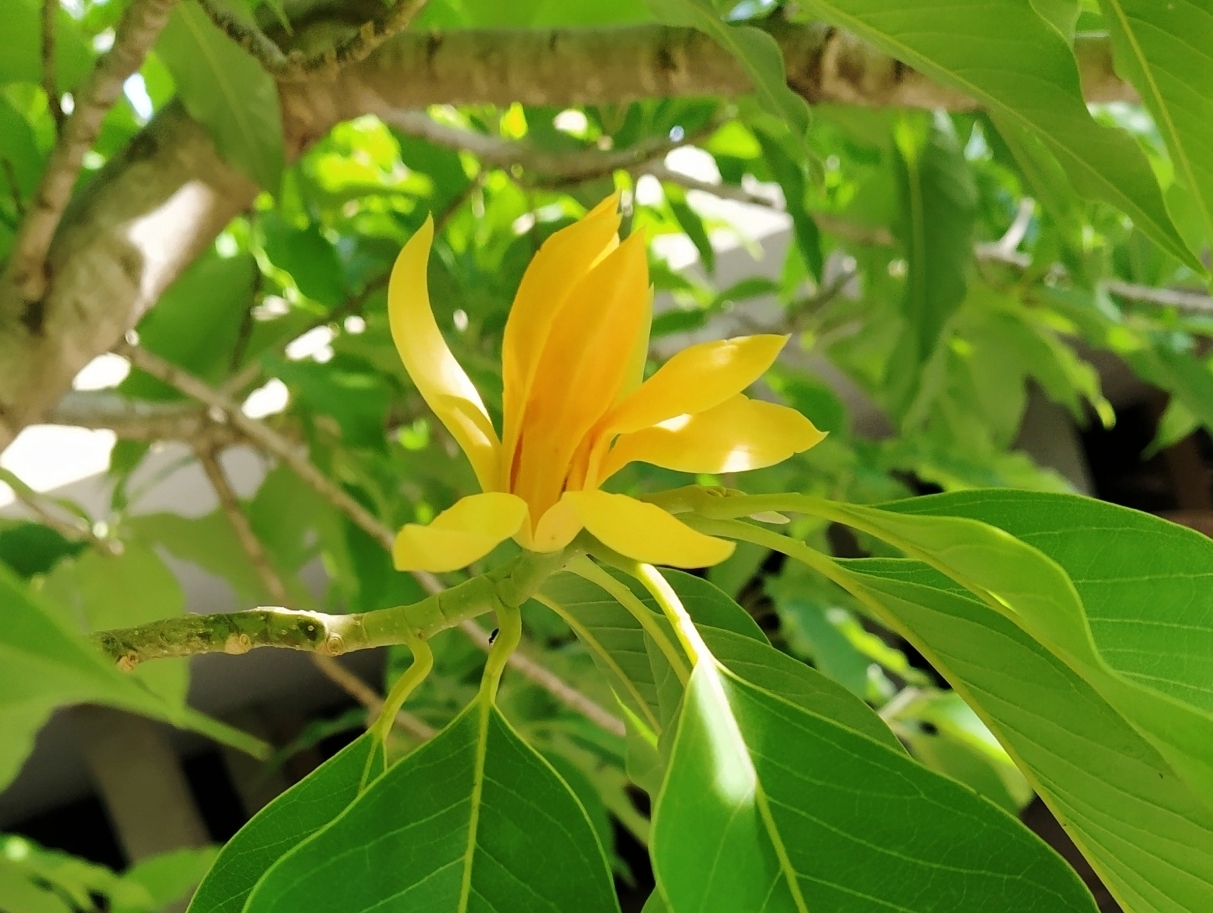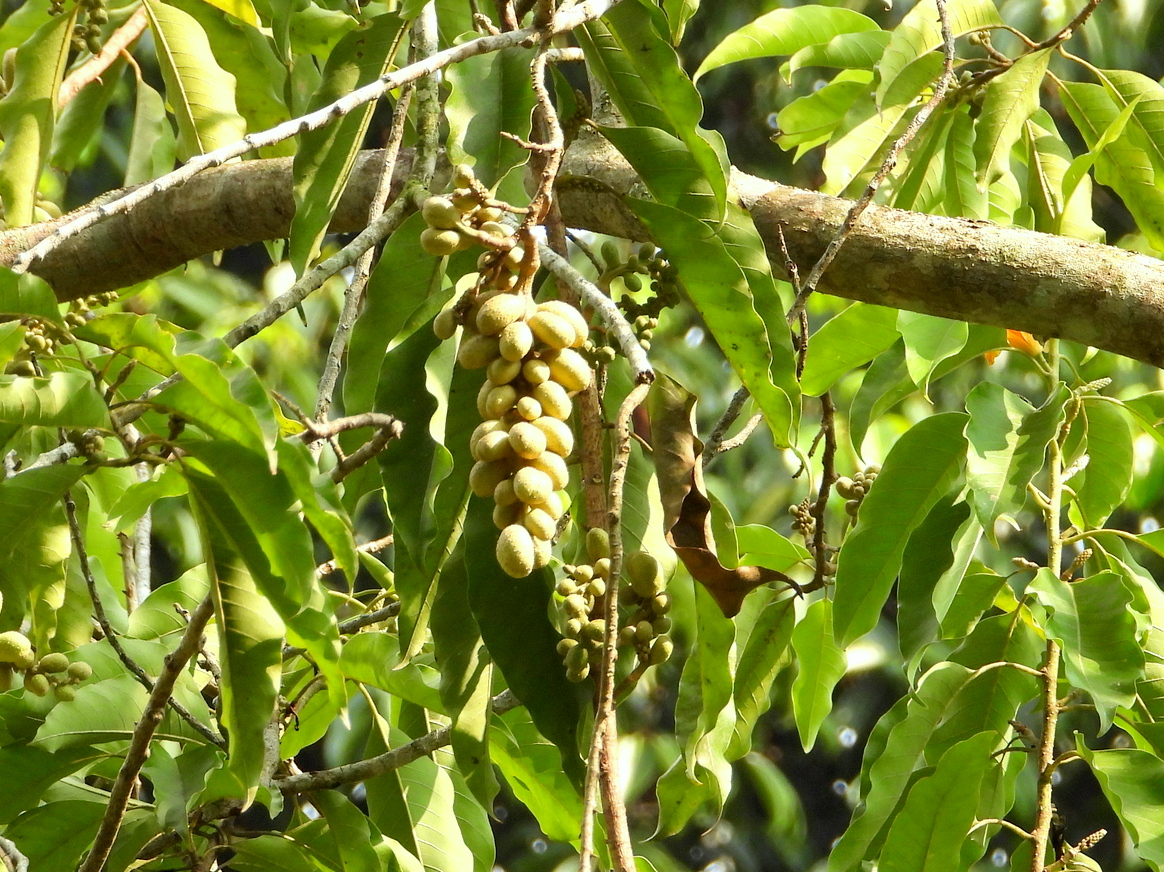
Scientific Name : Magnolia champaca (L.) Baill. ex Pierre
Category : Angiosperms
Status : Alive
Flowering tree, up to 30 – 50 m tall, and 183 – 190 cm diameter. Trunk is straight and columnar with smooth grey bark. Crown is cylindrical or conical. Leaf is elliptic or narrowly ovate (10 – 35 cm long by 4 – 11 cm wide), spirally arranged and slightly hairy on the underside. Leaf tip is short while leaf base is cuneate to rounded. There are 14 – 23 pairs of secondary veins which can be seen more visibly on the underside of the leaf. Petiole 1.5-3.5 (4) cm long. Stipules (up to 6.5 cm long) is hairy and attached to petiole for at least 0.7 – 3.9 cm long, leaving a ring-like stipular scar on the branches when it fallen. Occurring singly on leaf axils or pseudo-axillary on brachyblasts, flower is fragrant, light yellow when young and becoming orange-yellow as it matures. Each flower is about 2 - 4.5 cm long, comprising of 5 tepals in several inconspicuous whorls where the outermost tepals are obovate and innermost tepals are narrower. Brachyblast is densely pubescent, with 2 (-3) nodes (0.5-) 1-1.8 (-2.5) cm long. Stamen is 0.6 - 0.8 cm long, with connective appendages up to 0.1 cm long. Fruits are borne on a spiral cluster (6 – 30 cm long) which hangs down. Each cluster consist of 6 – 40 individual fruits. Each fruit is 1.5 – 2 cm long, woody and pale brown with large cream-coloured lenticels. Ripe fruit splits open to reveal 2 – 6 seeds inside. Seed is covered with red or pink flesh and hang freely on a thin white thread. Flowering and fruiting: March – July Uses: The aromatic, bitter bark is sometimes used for the adulteration of cinnamon. The fruit is said to be edible; the bark is used as a febrifuge. A decoction of the bark and leaves is given after childbirth. The flowers are used to treat leprosy. The leaves are used as a treatment against colic. The seeds are used to treat badly chapped skin. The tree is used to reforest badly eroded areas in Java. Soil under tree cover shows an increase in pH, soil organic carbon and available phosphorus. The flowers yield an essential oil known as champa or champaca oil. It is used in perfumery. Another essential oil, known as Michelia leaf oil, is extracted from the leaves. The sweetly scented flowers are used in India for hair adornment. A yellow dye is obtained from the flowers.
Specimen Information
-
Common Name(s):
सोनचाफा, Champa, Champaca
-
Synonym(s):
Michelia champaca L.
-
Family:
Magnoliaceae
About Me:
-
Created By:
admin
Botany Department (DVP College, Nimgaon Sawa) -
Created On:
25-08-2022
-
Contact:
Phone: 9960072282
Email: [email protected]
Find Location:
Photo Gallery





